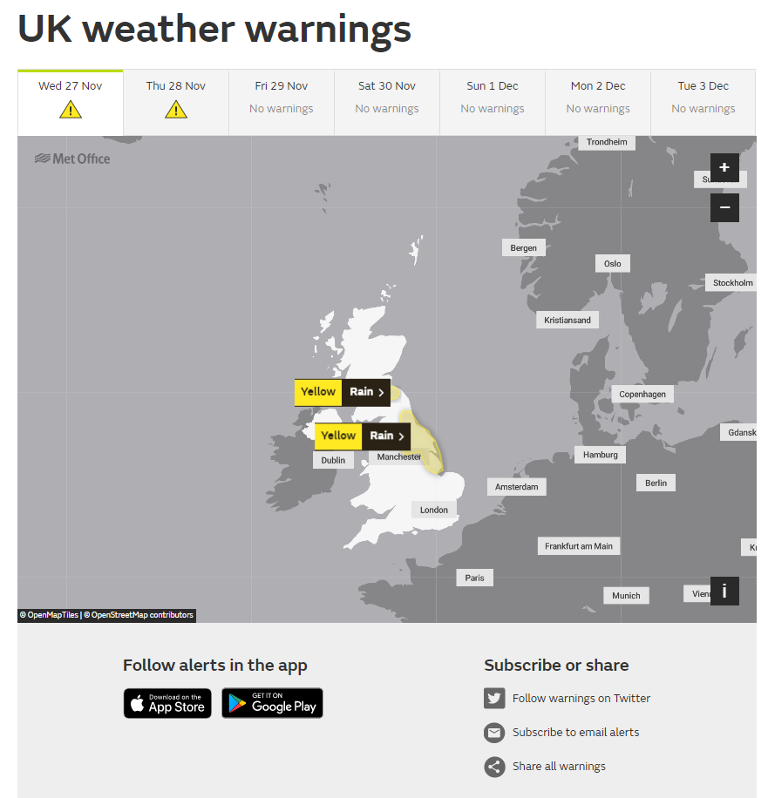A sudden alert on your phone or a headline on the news about a “Met Office weather warning” can be unsettling. But what does it truly mean for you, your family, and your daily routine? Far from being a simple prediction of bad weather, these warnings are a critical public safety tool, designed to help you prepare for and mitigate the impacts of severe conditions.
This isn’t about knowing if you need an umbrella; it’s about understanding if you should be changing your travel plans, securing your property, or staying indoors. In this detailed guide, we’ll demystify the Met Office’s National Severe Weather Warning Service, breaking down the colour-coded system and providing actionable advice to ensure you’re always one step ahead of the weather.
What is a Met Office Weather Warning?
A Met Office weather warning is an official alert issued to the public when severe weather has the potential to cause significant impacts. Unlike a standard weather forecast, which tells you what the weather will be, a warning focuses on what the weather will do. This is a crucial distinction. The Met Office’s modern “impact-based” warning system, implemented in 2011, considers not just the weather itself but also its potential effects on daily life, infrastructure, and public safety.
For example, a strong gust of wind in the middle of a winter field might not trigger a warning. However, that same gust during a busy summer festival could warrant a warning due to the increased potential for danger and disruption. This intelligent approach ensures warnings are relevant and timely, helping you make informed decisions.
The Colour-Coded System Explained
The most recognizable feature of a Met Office weather warning is its color. Each color—yellow, amber, and red—corresponds to a different combination of impact and likelihood. It’s a simple, at-a-glance system that communicates the severity of the situation.

Yellow Warning: Be Aware
A yellow warning is the most common and is issued when severe weather is likely to cause some low-level impacts, such as minor travel disruption.
- What it means: There is a possibility that the weather will affect you, but many people may not be significantly impacted.
- Actionable advice: Check the forecast details for your specific area. A yellow warning for wind might mean securing loose items in your garden, while a yellow warning for snow could mean planning for a longer commute. The key is to be aware and take simple, proactive steps.
Amber Warning: Be Prepared
An amber warning signifies a higher likelihood of more significant and widespread impacts from severe weather.
- What it means: There is a strong possibility of travel delays, road and rail closures, power cuts, and a potential risk to life and property.
- Actionable advice: You should actively change your plans and take protective action. This might involve postponing a long journey, moving your car to a safer location, or preparing an emergency kit with a torch, radio, and power bank.
Red Warning: Take Action
A red warning is the most serious and is reserved for very dangerous weather where there is a high risk to life.
- What it means: Substantial disruption to travel, energy supplies, and widespread damage to infrastructure are highly likely. There is a very high risk to life.
- Actionable advice: This is not a time for “business as usual.” You should take immediate action to protect yourself and others. Avoid travel, stay indoors, and follow the advice of emergency services and local authorities. The Met Office website states that a red warning is “rarely issued,” highlighting its extreme nature.
Real-World Examples and Their Impact
Understanding the theory is one thing; seeing it in practice is another. The impact-based system has proven its worth time and again. For instance, during Storm Arwen in November 2021, the Met Office issued a rare red warning for wind. The storm’s rapid intensification and the high likelihood of damaging winds in affected areas meant a red warning was issued well in advance.
This allowed emergency services and utility companies to pre-position resources, and the public to take life-saving measures such as securing property and avoiding travel.
Also Read: M23 Traffic Gatwick: Don’t Let it Ruin Your Trip
The resulting power cuts, which affected over a million homes, underscore the need for preparation, even with a warning. A statistic from the National Grid indicates that following a severe weather event like a storm, the average duration of a power cut can be significantly longer than a standard outage. This highlights why having a prepared kit is so vital.
How to Prepare for a Met Office Weather Warning
Being prepared isn’t about panic; it’s about being proactive. Here are some essential steps to take when a Met Office weather warning is issued for your area:
- Stay Informed: The first step is always to stay updated. Check the official Met Office website and app for the latest warnings.
- Assess the Risk: Don’t just look at the color; read the details. The warning will specify the type of weather (e.g., wind, rain, snow) and the specific area affected.
- Prepare Your Home:
- Secure loose outdoor items like garden furniture, trampolines, and bins.
- Check for any potential vulnerabilities in your home, such as loose roof tiles.
- If a flood warning is in place, have sandbags ready and move valuables to higher ground.
- Plan Your Travel:
- Before setting off, check travel updates from agencies like National Rail or local transport providers.
- Consider if your journey is essential. A yellow warning might mean taking an alternative route, while an amber or red warning likely means postponing the trip.
- Assemble an Emergency Kit:
- A portable power bank for your phone.
- A battery-powered or wind-up radio.
- A torch with spare batteries.
- Bottled water and non-perishable food.
- Any essential medications.
For more detailed guidance on preparing for specific weather types, you can explore resources from the UK Government’s “Prepare” campaign. It’s an excellent external source for practical, common-sense advice.
Be WeatherReady, Not Weather-Wary
A Met Office weather warning is not a cause for alarm but a call to action. By understanding the simple colour-coded system and the impact-based approach, you can move from a reactive position to a proactive one. Whether it’s a yellow warning for localized rain or a red warning for a major storm, being prepared protects you, your loved ones, and your property.
Don’t wait for a warning to be issued. Bookmark the official Met Office website and make it a part of your routine to check the forecast. Taking these small steps today can make a world of difference when severe weather arrives. Stay safe, stay informed, and be WeatherReady.

















